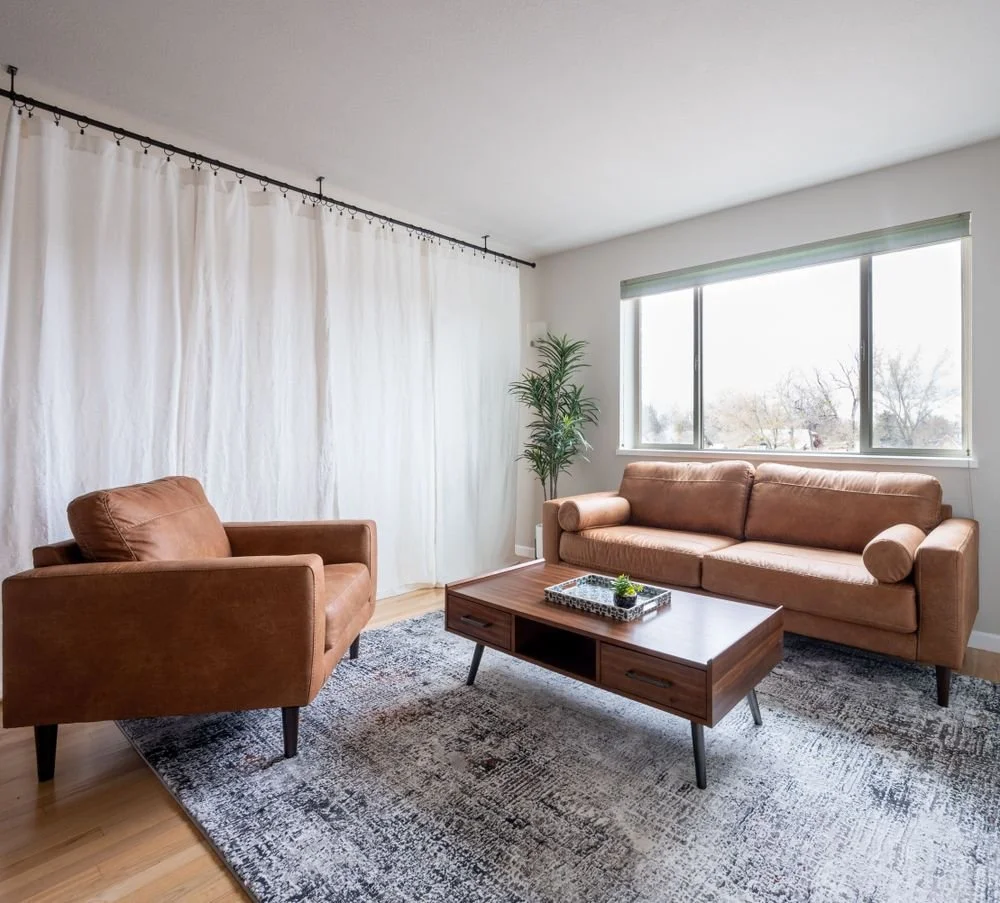My Approach
Cognitive-Behavioral Therapy
Cognitive Behavioral Therapy (CBT) is considered the gold standard in addressing anxiety, depression, OCD, perfectionism, and behavior change. My approach integrates modern “third-wave” components—including Acceptance and Commitment Therapy (ACT) and mindfulness-based strategies—to help you build insight, flexibility, and resilience in how you relate to your thoughts and emotions.
Yoga
Yoga practices such as mindful movement, breathwork, and grounding techniques are woven directly into therapy sessions if desired. At Seva, we’re fortunate to have a dedicated movement space designed for this type of work, allowing clients to explore physical awareness and regulation in a supportive environment. You’ll also learn practical mindfulness techniques that you can easily practice at home to manage anxiety and increase emotional balance.
brainspotting
Brainspotting is a deep trauma therapy based on the idea that “where you look is how you feel.” It uses eye positioning to access and process experiences stored in deeper regions of the brain that are not directly involved in language or rational thinking. By targeting these areas, Brainspotting allows the body and brain to release held tension and emotion, leading to powerful, lasting change. It’s especially effective for trauma, emotional blocks, and stress stored in the body.
Mindfulness & Movement: Group Therapy for AnxietY
FAQs
-
We are in-network with the following insurance providers:
Aetna
Anthem
BlueCross and BlueShield
Cigna
Optum
UnitedHealthcare (UHC | UBH)
If your plan is not listed or you prefer to pay privately, we also offer a sliding scale rate of $80–$120 per session.
-
Yoga is offered as an optional part of the therapy process. Some days, movement or breathwork may feel helpful; other days, the focus may be purely talk-based. It’s entirely client-centered and up to you.
When used, yoga may include gentle stretching, grounding postures, mindful breathing, or body awareness techniques to help regulate the nervous system, reduce anxiety, and reconnect mind and body.
If you’re not interested in incorporating yoga at all, that’s perfectly okay—sessions can focus solely on traditional counseling approaches such as CBT, ACT, or Brainspotting.
The goal is to meet you where you are and support healing in a way that feels authentic, safe, and aligned with your needs.
-
The first session is really about getting to know one another. It’s a chance for me to learn more about you — what’s been going on, what you’re hoping to work on, and what feels most important right now — and for you to get a sense of me and how I work.
We’ll spend time gathering information, discussing your goals, and exploring what approaches might fit best (such as CBT, ACT, Brainspotting, or yoga-based integration).
You can expect a collaborative, relaxed, and supportive environment — no pressure to share more than you’re ready for. Some sessions may feel conversational and reflective, while others might focus on specific skills or deeper processing.
There’s no one-size-fits-all approach; therapy is guided by your comfort, your pace, and your needs.
-
Most sessions are 50 minutes, typically held once per week. Some clients prefer to meet bi-weekly, while others schedule more frequently during times of transition or stress. We’ll find a rhythm that fits your needs and goals.
-
Both options are available. We offer in-person sessions in Wheat Ridge as well as secure telehealth sessions for clients located anywhere in Colorado. You can choose whichever feels most comfortable or alternate between both as needed.
-
That’s completely okay — many clients have had mixed experiences before finding the right fit. Therapy is highly relational, and the connection between therapist and client matters as much as the approach itself. We’ll move at your pace, and if something isn’t working, we’ll adjust together.
-
Brainspotting is a trauma-focused therapy that uses eye position to help access deeper regions of the brain that are not always reached through talk therapy. The phrase “where you look is how you feel” captures how specific eye positions can help process and release stored emotional material safely and effectively.
“Drake is a one of a kind! I met him when I was at my absolute worst and I have been seeing him for over a year now. I feel so fortunate to be under is care and guidance. He is very compassionate, skilled, and a great listener. He has helped me navigate hurdles in my life and also helps to keep me accountable. Through Drake’s therapy, I now feel more grounded and stable. I will follow Drake wherever he goes, and I highly recommend him to others!” — Verified Client, ZocDOC



